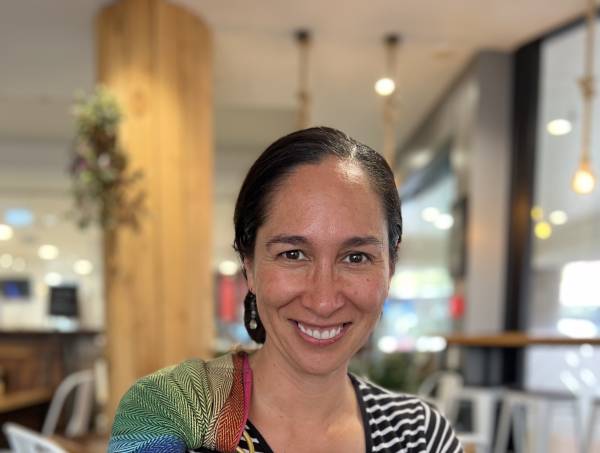Elon Musk’s drug use back on the agenda for the Tesla board
Find out how Elon Musk’s reported drug use has Tesla board members facing a familiar quandary: deciding what, if anything, to do about the…

A geographer by training, with a background in environmental management, is how Manea Sweeney (Ngapuhi, Te Atiawa) CMInstD describes herself.
The recent winner of an Institute of Directors’ (IoD) Emerging Director Award (Wellington branch), says working at the intersection of people and the environment means she is always across policy changes and macro-level trends.
“I have a firm sense of tikanga and te ao Māori and I am committed to setting people up for success," says Sweeney, who is a graduate of the Leadership Institute and the NZ Coaching and Mentoring Institute, and an active member of the NZ Planning Institute and the Resource Management Law Association.
The self-confessed lifelong learner is thrilled to receive the further learning and development opportunities as a recipient of the Emerging Director Award which includes $2,000 towards IoD governance development, complimentary IoD membership for 12 months, six complimentary attendances for Wellington branch events, an opportunity for one-on-one interviews with experienced senior directors, a placement for up to 12 months with a sponsor board, and an opportunity to sit as an observer on the IoD branch committee for the duration of the award.
“The Institute of Directors is full of accomplished professionals and I’m really excited about having access to a mentor, being able to observe on a board, which may be different to the sector I’m working day-to-day, and networking with likeminded individuals.”
“I also feel like it is recognition of all those who have supported me in my governance journey to date, and given their time and energy so freely to help me in my development.”
The executive director of Tonkin + Taylor Group – an employee-owned engineering and environmental consultancy – has expertise that covers engagement and consultation with indigenous peoples and communities, resource management planning, including resource consents for large multidisciplinary infrastructure projects, disaster recovery, climate change and environmental management.
Sweeney says she was drawn to the infrastructure sector, in part, because of the possibility to make spaces more accessible and interesting and “educating people through a connection to place”. But there is also the satisfaction that comes with the more tangible aspects, too.
“Being part of the delivery of a new wharf on the Chatham Islands and driving the road from Kaikoura to Blenheim – knowing I was part of making it happen – feels awesome,” Sweeney says.
As for the sector, Sweeney believes there is still a lot of work to be done around diversity and creating opportunities for women to grow within it.
Te Waihanga that women make up approximately 13 percent of the construction workforce.
“In engineering and environmental professional services, statistics are more complex to access. But generally, they seem to sit below 20 percent of the workforce.”
As a result, the sector isn’t able to leverage or maximise its access to New Zealand’s talent, according to Sweeney, who believes that greater diversity in the industry will create opportunities for the built environment to be designed for communities and people, and tailored appropriately for different needs.
Other areas that need work in the infrastructure sector include pay parity and reducing the gender pay gap, a focus on pipeline talent and actively supporting initiatives at university or school level, and early career development for retention. Plus, more women in leadership positions, and more men who are champions of diversity and inclusion, according to Sweeney.
“And normalising diversity and inclusion within workplaces and mitigating unconscious biases through targeted training and upskilling,” she says.
Organisational culture is also top-of-mind for the emerging director, who says when it is functioning well, everyone can feel it, “That’s probably why I’ve heard it described as ‘the vibe’.”
She says good organisational culture is built on the foundation of actions and behaviours that create that feel-good vibe.
“It's about good communication at all levels… the courage to call out ‘bad behaviour’ and hold people accountable for actions that don’t align with an organisation's values, and celebrating wins, both at an individual and collective level,” she says.
Sweeney also recognises the importance of collective purpose, which is driven by a sense of belonging.
Bringing te ao Māori into the picture, boards and organisations can only integrate this into their culture strategy if they are authentic about it.
“Te ao Māori has a lot to offer. As we move to more purpose-led, socially responsible ways of doing business, there is strong alignment with tikanga Māori including values like kaitiakitanga [stewardship], whanaungatanga [a sense of belonging], and manaakitanga [a culture of care] which are central to the expectations of new professionals. And unpacking these and what they mean to your own organisational culture can be powerful,” she says.
Keeping in mind, too, that “te ao Māori is evolving and dynamic”, will position any organisation well for the future.
An aspiring fiction writer in her spare time, Sweeney is also an advocate for the arts and would relish the opportunity to be an independent director on an arts board.
Her recent connection with the health sector has seen her come out the other side of stage three breast cancer, making her acutely aware of the challenges.
“Healthcare professionals are striving to do their best in an overloaded system,” she says of the experience, which prompted an interest in the importance of good governance to public sector and health boards.
She is now keen to be involved in improving the outcomes and experiences of those going through the system.
“I believe I can bring a fresh and lived perspective into health,” says Sweeney.